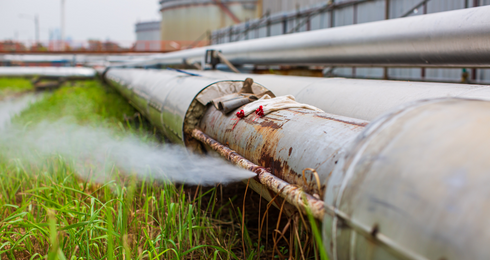What Is Corrosion?

Corrosion is a natural process of converting refined metals into a more chemically stable form, such as oxide, hydroxide or sulphide. The material is destructed by a chemical and/or electrochemical reaction with the environment.
There are Two Types of Corrosion:
Uniform Corrosion: also known as Common Corrosion, is smooth wall loss over a larger area, often reddish in colour. The Elcometer MTG range is ideal for measuring this type of corrosion.
Localised Corrosion: such as porosity, pitting, cracking and laminations. This is best measured with an A-Scan capable gauge like the Elcometer CG70 or the Elcometer CG100.
Why use an A-Scan to detect corrosion?
The NDT gauge generates an electronic signal pulse and sends this pulse to the transducer. The transducer converts the electrical signal into a sound vibration signal. The sound vibration signal passes through the material under test until it hits a back wall or a defect. The signal is then reflected back to the transducer and converted to a measurement reading by the gauge.
The time the signal takes to travel and return is converted into a thickness reading. This is how the Elcometer MTG reads general thickness and uniform corrosion.
However, localised corrosion can create several return echoes and it can be difficult to determine which signal is the correct thickness. The A-Scan helps determine the correct signal to monitor and will identify small signals that may be a potential concern. For localised corrosion, the Elcometer CG100 Corrosion Thickness Gauge should be used.
